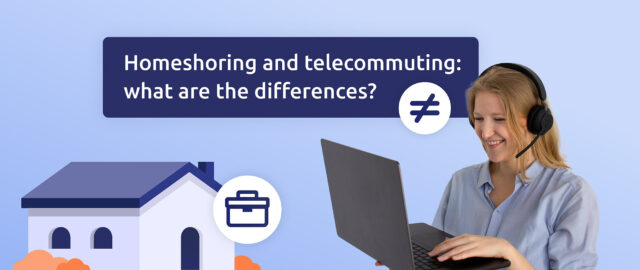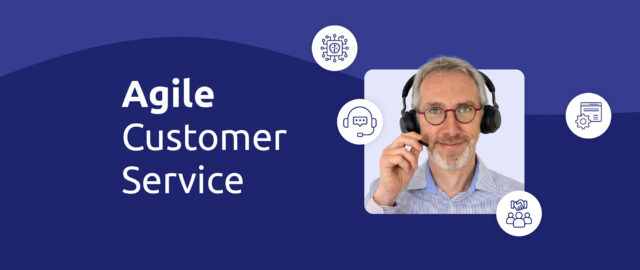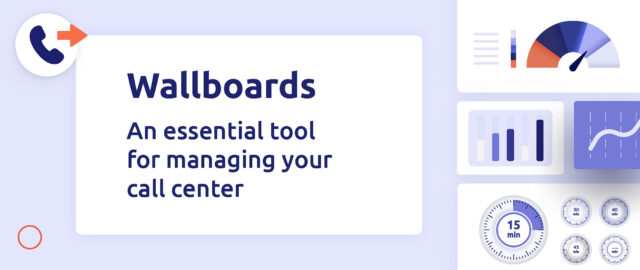Differentiating between homeshoring and telecommuting
Although the terms are sometimes used interchangeably, they actually describe different realities, each with its own specific characteristics, advantages, and disadvantages.
What is teleworking?
Teleworking allows employees to perform their professional duties away from the company’s premises, typically from home. This arrangement remains within the framework of a traditional employment relationship, with the employee bound by a contract of employment. Telecommuting provides greater flexibility, reduces commute times, and often helps in managing work-life balance more effectively.
What is homeshoring?
Homeshoring, by contrast, is a form of work outsourcing where individuals, usually freelancers, offer services to one or more companies from their own homes. This arrangement is characterized by a service contract rather than an employment contract, distinguishing it from telecommuting.
The fundamental difference between these two modes of work lies in the worker’s legal status: a teleworker is an employee, while a home agent operates as a self-employed individual.
While telecommuting is favored for maintaining a salary structure alongside improved life balance, homeshoring appeals to those seeking control over their schedules and choice of projects.
Despite their differences, telecommuting and homeshoring share a common feature: both involve working remotely.
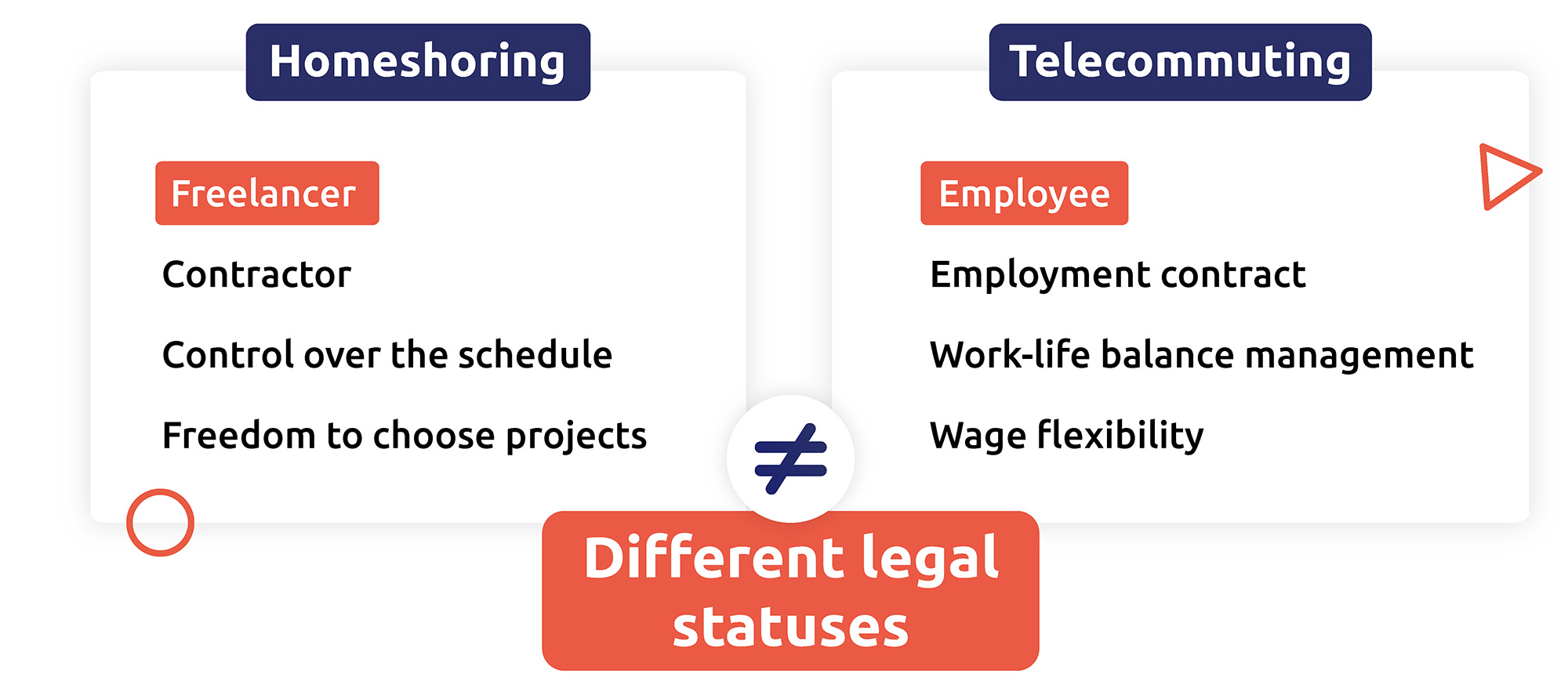
Working remotely: a not-so-new topic
The idea of working remotely, although highlighted by the worldwide COVID-19 pandemic, is not a new concept.
Before 2020, telecommuting was still relatively limited in the world, with only a minority of employees experimenting with it on a regular basis. The face-to-face culture remained predominant, underpinned by organizational norms and a traditional management style that valued physical proximity as a guarantee of productivity and collaboration.
The health crisis of 2020 acted as a catalyst, forcing companies and employees alike to adopt remote working on a massive scale. This shift, far from being temporary, revealed the viability and benefits of telecommuting.
By 2024, several companies have integrated telecommuting into their organization, with more than 30% of the workforce working remotely. This marks a significant shift from the pre-pandemic period, when telecommuting was seen as the exception rather than the norm.
This transition has been facilitated by the development and adoption of communication and collaboration technologies that enable teams to remain connected and productive, regardless of their physical location.
The experience of telecommuting, while enriching, has also highlighted specific challenges, such as the need to maintain a clear separation between work and private life, and cybersecurity issues.
Far from being an ephemeral reaction to a health crisis, teleworking is in fact part of an underlying trend towards greater flexibility and a redefinition of workspaces.
Home Agents: a new vision of the advisory profession
The rise of homeshoring and telecommuting has brought about a significant transformation in the contact center sector, with the emergence of the “Home Agent” gig.
Home Agents are customer advisors who work remotely, usually from home, as freelancers. Home Agents are part of the homeshoring movement.
This new model differs radically from the traditional call center structure, where advisors are grouped together in the same physical space. The move to self-employed status offers Home Agents greater flexibility in terms of working hours and choice of assignments, while giving them greater autonomy in managing their professional activity.
With this autonomy comes increased responsibility, as Home Agents must not only maintain a high level of performance and customer satisfaction, but also manage the administrative and logistical aspects of their business.
For companies, using Home Agents gives access to a diversified talent pool, without the geographical constraints traditionally associated with building in-house teams. This flexibility also translates into a greater capacity to manage peaks in activity and deliver high-quality customer service.
What’s more, the Home Agent model is part of a broader trend towards personalizing and humanizing customer service. By working from home, in an environment they are familiar with, advisors are often better able to offer a warm, authentic customer experience. This virtual proximity, paradoxical but real, can contribute to strengthening customer loyalty and enhancing a company’s brand image.
Successful homeshoring requires the adoption of new tools.
Homeshoring, teleworking and tools: 5 tips for contact centers
Several tools and technologies are needed to develop the practice of telecommuting or homeshoring in a contact center. Here are 5 tips to help you develop teleworking and homeshoring in your contact center.
1. Work remotely with the right tools
Adapting to remote working involves few substantial changes for sales and customer service teams, provided they have the right tools at their disposal.
Using a cloud-based call management solution, integrated with the usual business tools, gets teams up and running fast. All you need is a reliable Internet connection and a suitable communication device (landline phone, cell phone, softphone or WebRTC).
With these tools in place, teams can continue to manage their calls as if they were in the office, the main difference being that they move their workspace to their home.
2. Manage your call peaks with automation
The management of call peaks, particularly when advisors are absent for health reasons, can be optimized by automation. Specific queries, such as order status checks or general information requests, can be handled automatically without the direct intervention of an advisor.
Automation, via self-care and text-to-speech solutions in particular, enables customers to quickly access the information they need, helping to make customer service more efficient. The idea is to reserve advisor intervention for calls requiring human interaction.
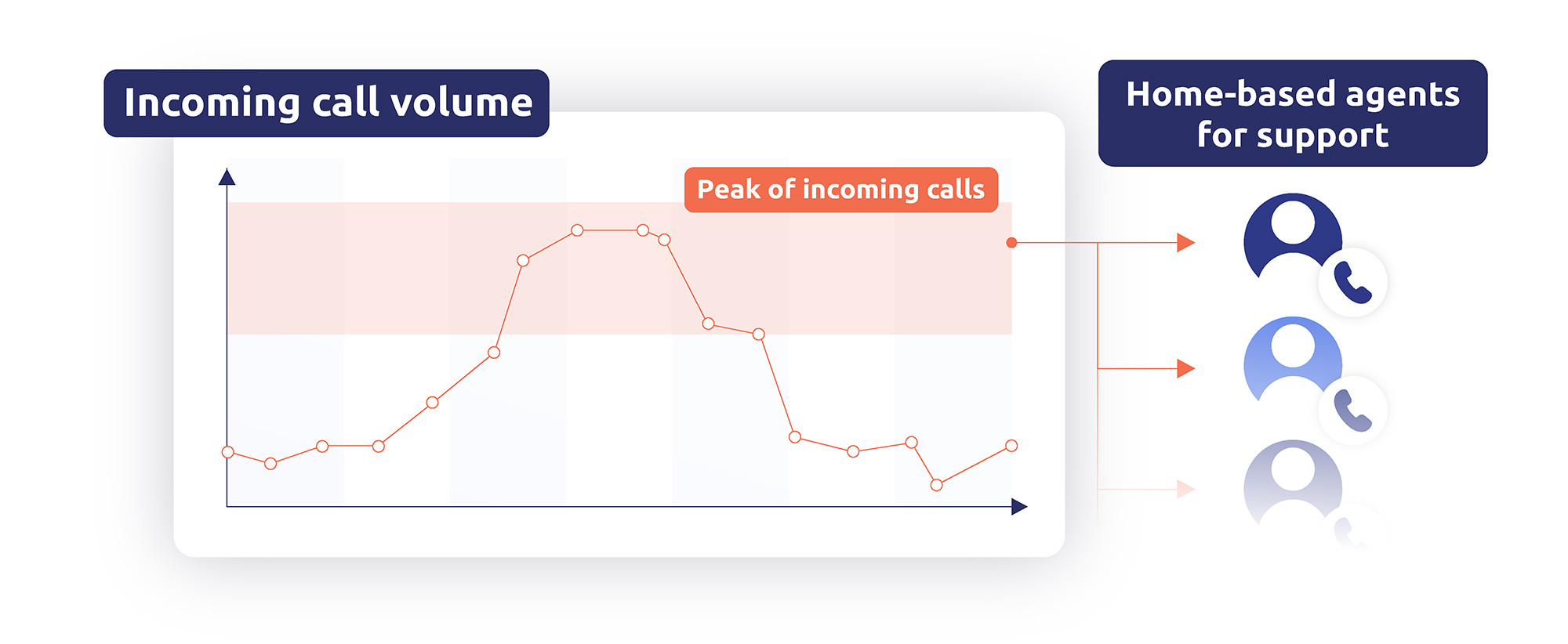
3. WebRTC makes video assistance easy
The dream of communicating over long distances became a reality nearly simultaneously with the invention of the telephone. However, it wasn’t until the widespread adoption of smartphones and the emergence of free video chat and conferencing apps like Skype, WhatsApp, Snapchat, and FaceTime that this dream truly integrated into our private lives on a massive scale.
In the realm of customer relations, however, the uptake of video communication remains limited, even when its benefits are clear. Implementing video calls as a standard feature in “classic” B2C customer service scenarios generally does not make sense. Additionally, consumers often prefer not to be on camera for simple interactions, such as inquiring about a parcel or scheduling an appointment.
Nonetheless, in both B2B and B2C contexts, offering video calls as an option to streamline processes or provide quicker assistance has a strong potential to gain acceptance. When executed with high-quality service that meets expectations, video communication can enhance the customer experience and foster loyalty.
With the WebRTC (Web Real-Time Communication) protocol, you no longer need to download an application to enjoy videoconferencing functionality! Now you can communicate visually and vocally, with no restrictions.
Integrated into the most recent versions of the main Internet/mobile browsers, WebRTC technology lets you switch to video without ending your phone call. The two streams – voice and video – are simultaneous but independent. That’s why Diabolocom has chosen this protocol.
Video assistance: what are its uses?
Provided that it is extremely simple for the customer, the use of video-assistance is particularly relevant in all situations where it is quicker and more effective to show than to describe orally, particularly in the following cases:
- Remote troubleshooting: When a customer needs remote troubleshooting, asking them to describe their problem in person isn’t always the best solution. In such cases, using video assistance makes perfect sense. It enables the advisor to understand more quickly and easily the nature and possible causes of the breakdown.
- Establish a (pre-)diagnosis: Following on from the previous use case, when the problem cannot be solved remotely, the voice-visual coupling enables technicians/experts to carry out a more precise diagnosis/pre-diagnosis before triggering an on-site intervention. This video-assisted pre-qualification work identifies the technicians and maintenance staff best suited to carry out the intervention. The result: a higher first-visit resolution rate.
- Confirming a customer’s identity: Let’s take the example of opening a bank account. The bank can use video to accompany the customer through the formalities. The use of video is reassuring for the customer, who can ask any questions he or she may have face-to-face. The advisor, for his part, can check the customer’s identity document live to complete the application file.
Visio-assistance experienced a boom similar to that of telecommuting during the pandemic.
4. Boost your agents’ efficiency with CRM integration
Self-service wasn’t enough? The call is now redirected to your teams. Always with a view to being more productive, automatically provide your advisors with all the information they need to handle the call.
Thanks to the native integration of your customer interaction management software with your CRM (Salesforce, Zendesk, Microsoft Dynamics or other business tools), your agents have access to all customer data in the blink of an eye: form feedback, history of past exchanges, call script, PCI-DSS-certified credit card payment, choice made in the IVR, etc. They handle their calls productively and proactively, which promotes customer satisfaction. They handle their calls productively and proactively, which boosts customer satisfaction.
5. Offer your customers premium voice quality
Now you know how to guarantee business continuity, even when working from home. It would be a shame to spoil everything with recurrent interruptions to your communications!
It may seem trivial, but it’s not always the case: when making calls, the most important thing is to have clean, uninterrupted exchanges. That’s why a software publisher who is also a telecommunications operator, as is the case with Diabolocom, is a real guarantee of reliability.
Diabolocom answers all these points with its call center software for sales teams and contact centers:
- A cloud contact center solution that is totally suitable for teleworking;
- CRM integration with business tools ;
- Premium call quality guaranteed by our telecom operator infrastructure;
- Ease of use and rapid deployment thanks to intuitive interfaces.
Teleperformance, world leader in outsourced multi-channel customer experience management, has called on Diabolocom to equip hundreds of teleworking agents. Among others, the Diabolocom solution is used by all advisors who answer calls to 0800 130 000, the number that answers questions about the coronavirus.
Regardless of your perspective, it’s wise to prepare for exceptional circumstances like those experienced during the Covid crisis by adopting cloud-based tools that support remote work. Our call center software is a prime example:
Our fully cloud-based contact center solution enables your agents to work remotely, offering features such as:
- Management of inbound calls with self-care options to handle peak periods at the year’s end.
- Creation of outbound call campaigns to boost your business and maintain customer connections.
- WebRTC technology, which eliminates the need for physical phones and softphones.
- Visio-assistance, allowing you to support your customers without physical interaction.
Notable clients such as Air Liquide, Domiserve – La Banque Postale, Azureva, and Mantrac-Caterpillar, along with hundreds of others, have successfully transitioned to teleworking with the assistance of our project managers.
Curious to know more about Diabolocom?
